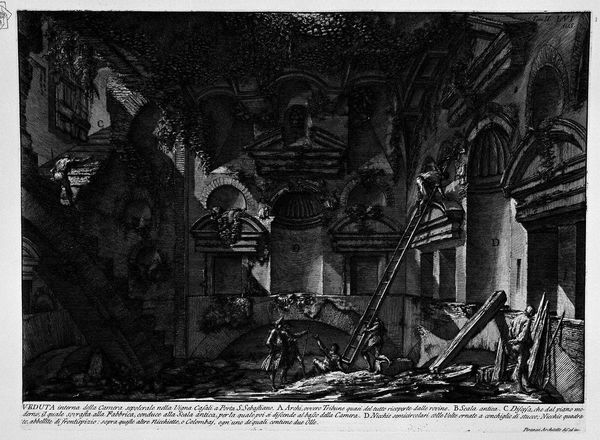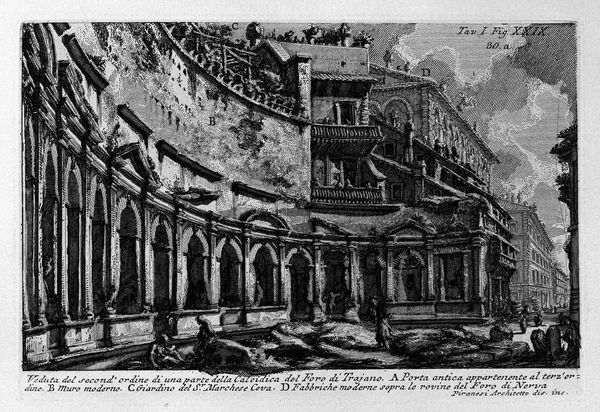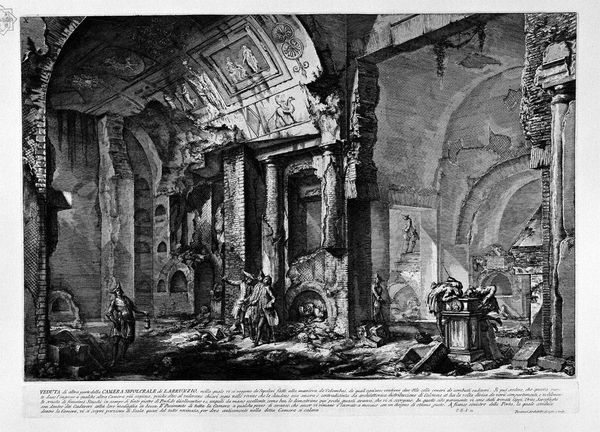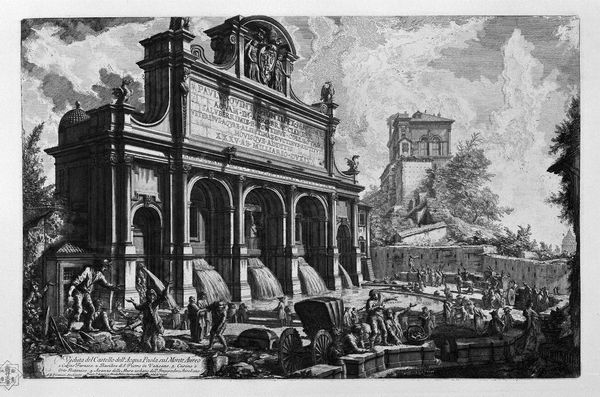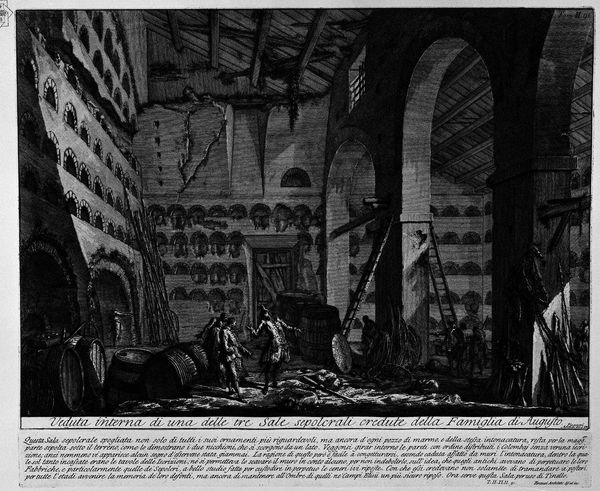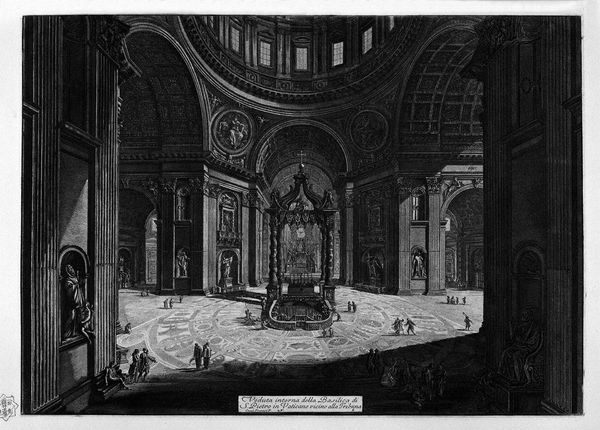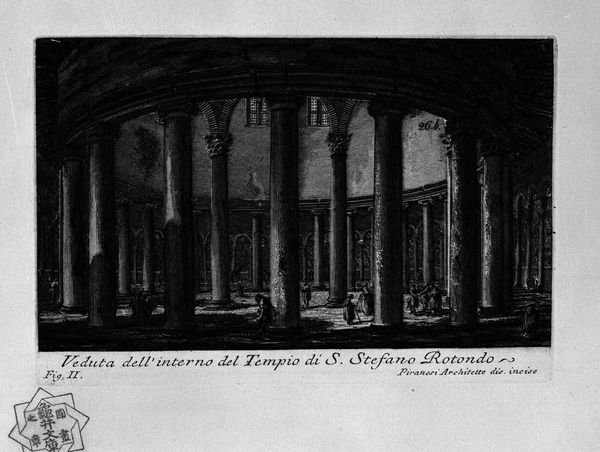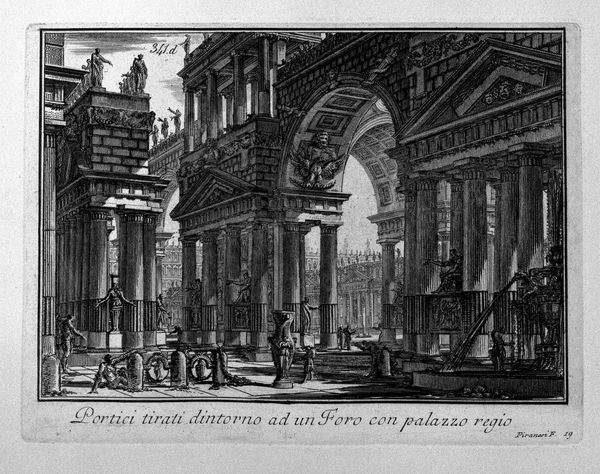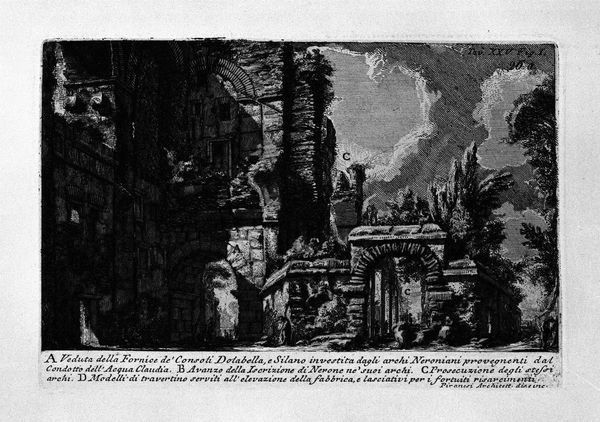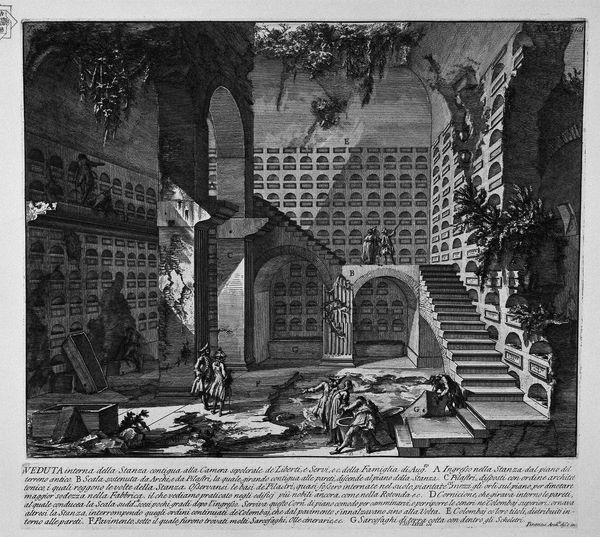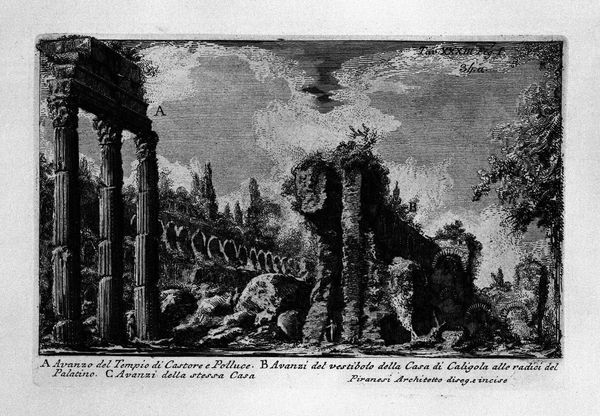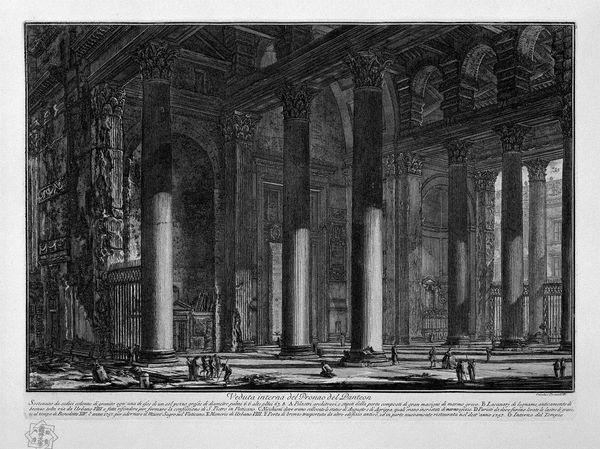
graphic-art, print, etching, engraving, architecture
#
graphic-art
#
baroque
# print
#
etching
#
cityscape
#
italian-renaissance
#
engraving
#
architecture
Copyright: Public domain
Curator: This is a captivating print entitled “Porches pulled around a hole of the Royal Palace” by Giovanni Battista Piranesi. He worked primarily with etching and engraving, techniques evident in this Italian Renaissance cityscape. Editor: The atmosphere is immediately striking—claustrophobic yet expansive. The rigid verticality of the columns contrasts with the busy movement on the water, creating an unsettling dynamism. What materials were commonly employed by Piranesi for such intricate architectural depictions? Curator: Piranesi masterfully worked with etching and engraving. The tangible process reflects more than mere depiction, with intaglio lines bearing testament to layers of acid biting into the metal plate. These marks of craft become the bricks and mortar of this symbolic architectural fantasy. He created strong light and shadow, very baroque I'd say. Editor: Absolutely. That interplay of light and dark lends itself to the creation of symbolic meanings. Think about the very visible labour etched, literally, into the artwork – the acid eating away to construct an image. Does that reveal anything about societal perceptions of architecture? Perhaps reflecting its grandeur but also the material reality, even cost, behind it? Curator: Consider the submerged cityscape and the figures travelling by boat—it evokes a world where grand structures coexist with the unpredictable forces of nature and maybe also about power. Architecture often symbolizes permanence and authority. Its placement on a river suggests the erosion of structures that were built for domination over time. It makes me wonder about the symbols used throughout Renaissance cityscapes and how it was adapted to communicate themes about nature and mortality? Editor: This feels deeply interconnected. He has skillfully blended high art architectural precision with a commentary about process. This forces us to think about labor and permanence together with the reality that those ideals are temporal and dependent on ever shifting environmental conditions, not purely rational ones. It changes our entire perception. Curator: Seeing Piranesi's blend of historical architectural styles in such a state truly opens pathways to understand our cultural memories, prompting profound awareness. Editor: And considering the making, the method, highlights its temporal essence in all dimensions—thought, representation, substance.
Comments
No comments
Be the first to comment and join the conversation on the ultimate creative platform.
